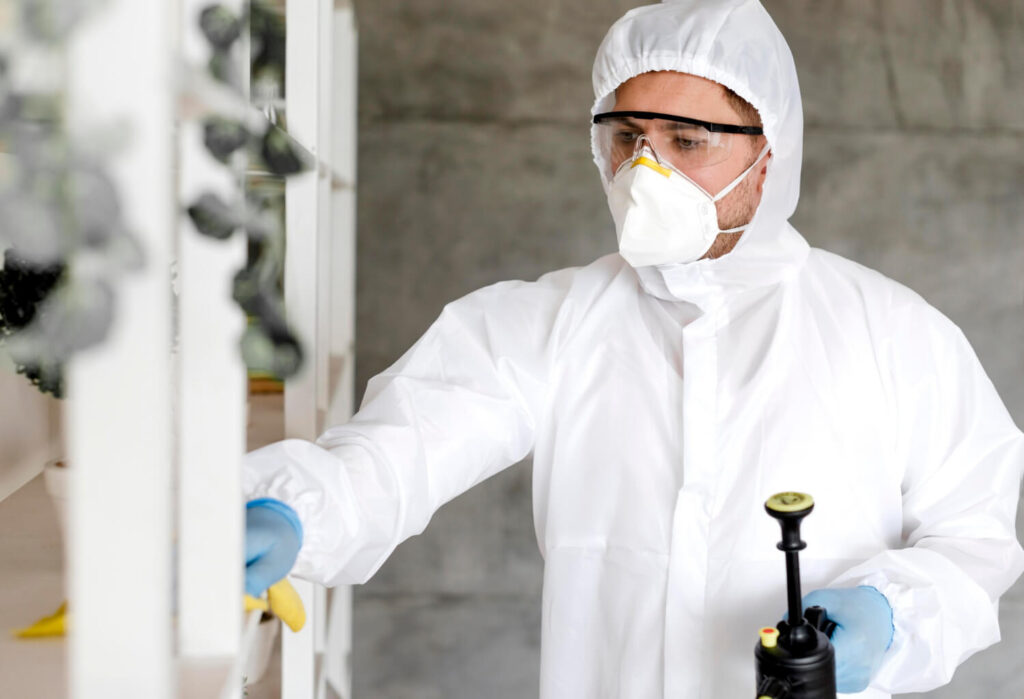Mold damage in homes or businesses can be far more dangerous than just an unsightly appearance on walls or ceilings. It represents a hidden threat, impacting both health and the structural integrity of your property. Understanding these risks is crucial to addressing mold issues before they escalate into more severe problems.
The Health Risks of Mold Exposure
Mold exposure can lead to a wide range of health problems. The tiny spores mold releases into the air can cause respiratory issues, allergic reactions, and skin irritation. Those with pre-existing conditions like asthma, as well as children and the elderly, are especially vulnerable. Prolonged exposure may lead to chronic health issues, including infections and long-term lung damage. If you’re noticing unusual allergic reactions or breathing difficulties at home, mold could be the culprit.
Structural Damage Caused by Mold
Mold is not just a health hazard—it also poses serious risks to the structural integrity of your property. When mold infiltrates porous materials like drywall, wood, or ceiling tiles, it can weaken them over time. Left untreated, mold can compromise the stability of walls, ceilings, and floors, leading to costly repairs or even structural failure. The longer mold is left unchecked, the more significant the damage, making professional intervention essential.
How Mold Impacts Indoor Air Quality
Indoor air quality is severely compromised by mold growth. As mold spores become airborne, they circulate throughout your property, contaminating the air. This can result in headaches, fatigue, and respiratory issues for anyone in the affected environment. Mold in confined spaces like attics, basements, and bathrooms can exacerbate these effects due to poor ventilation, making it critical to remove the mold to restore a healthy indoor environment.
The Financial Impact of Mold Damage
Ignoring mold problems today can lead to significant financial burdens tomorrow. The cost of remediation increases as mold spreads, especially if it causes damage to walls, ceilings, or structural elements. Additionally, mold may affect the value of your property, making it harder to sell. It’s far more cost-effective to address mold issues early before they escalate into major repairs or renovations.
Importance of Professional Mold Removal
Attempting DIY mold removal can lead to incomplete clean-ups, with mold reappearing or spreading to other areas. Only professional mold remediation services, like those offered by “Advanced Restoration & Construction” in Los Angeles, provide the thorough and safe removal of mold. Our team uses specialized equipment and techniques to eradicate mold, prevent its return, and ensure your home or business is restored to a safe, healthy environment.
Why Choose Advanced Restoration & Construction in Los Angeles
At “Advanced Restoration & Construction,” we prioritize safety, expertise, and customer satisfaction. Our certified technicians quickly assess the extent of the mold damage and develop an effective remediation plan. We offer fast response times, free inspections, and eco-friendly solutions, ensuring minimal disruption to your home or business. With years of experience in mold remediation across Los Angeles, we guarantee quality service that gives you peace of mind.
Faqs
Look for dark stains, discoloration, or musty odors in areas prone to moisture, such as bathrooms and basements. If you suspect mold, contact “Advanced Restoration & Construction” in Los Angeles for a professional inspection.
Yes, mold spores can easily become airborne and spread throughout your home, especially if the affected area isn’t properly contained during remediation. Hiring a professional team ensures containment and complete removal.
Mold exposure can cause allergic reactions, respiratory problems, and even long-term lung damage for vulnerable individuals. Children, the elderly, and those with asthma are at higher risk of complications.
DIY mold removal can be risky, as incomplete cleaning may allow mold to return or spread. Professional services ensure that all mold, including hidden areas, is safely and completely removed.
Ensure good ventilation in moisture-prone areas like bathrooms and kitchens, fix leaks promptly, and maintain a low humidity level. Regular mold inspections by professionals can also help prevent recurring issues.

